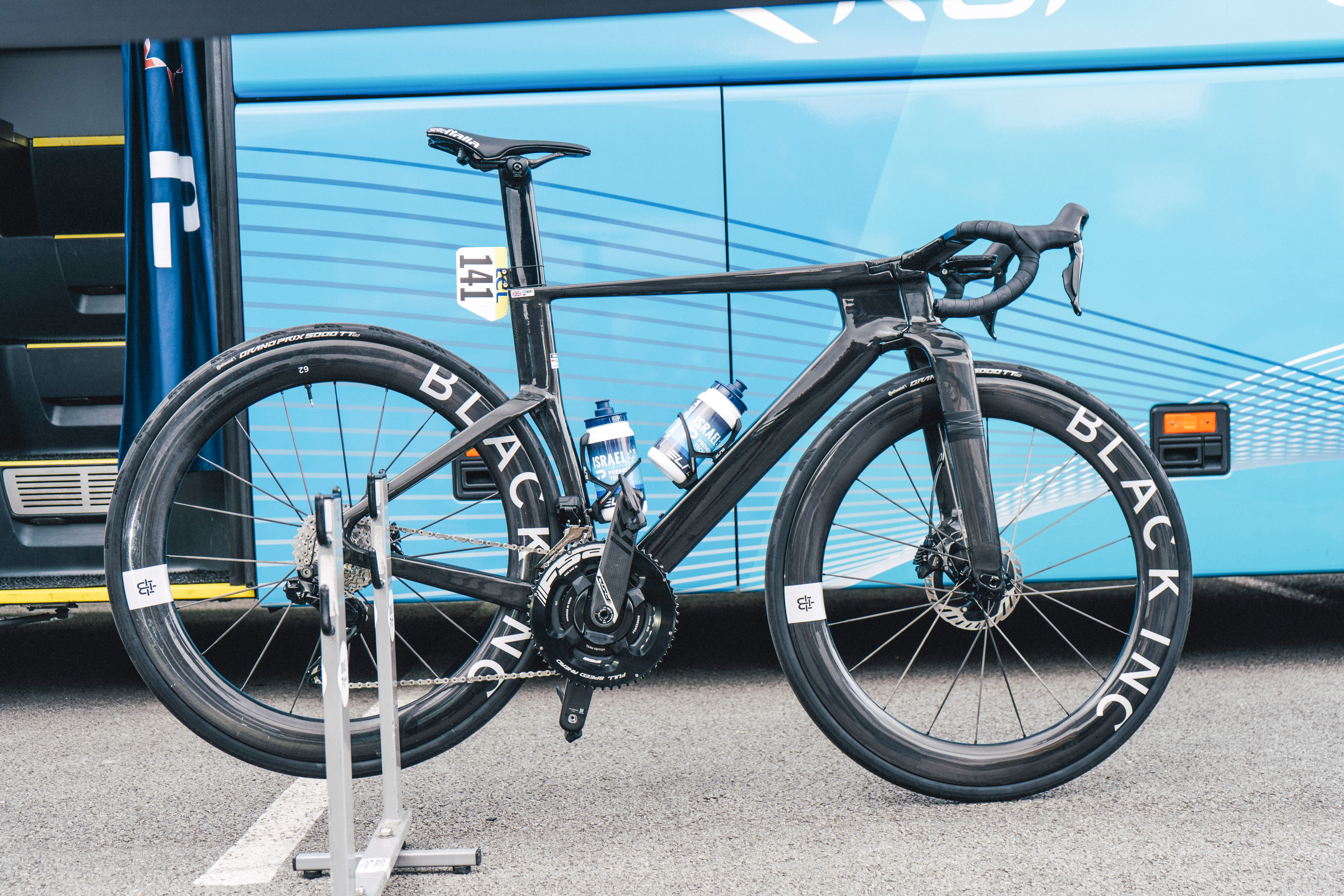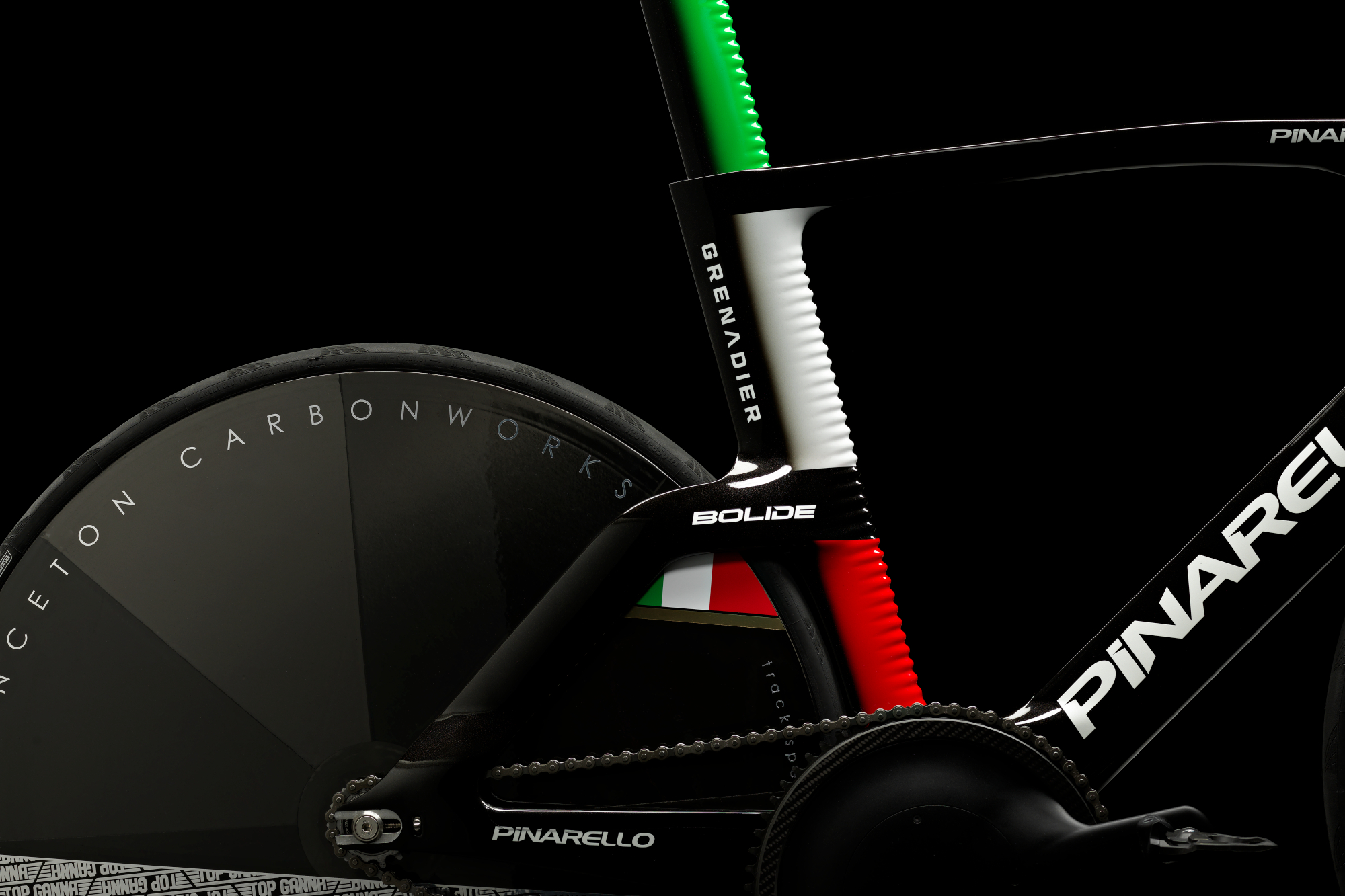
Alongside the racing at this week’s Critérium du Dauphiné, a new bike has stolen headlines. It came out of the blue, startling in design, and stood out among its contemporaries. Our friends at Cyclingnews were on the ground to spot and photograph it, describing it as “insane” and “mad”.
I’m talking about Factor’s prototype aero bike. We know little about it at the moment – we don’t even know its name – other than Jake Stewart rode a blacked-out version to a commendable fifth place on the first stage. One look at the bike’s obnoxiously wide forks tells us this is no typical road machine. No, Factor’s new model marks a new age of road design, a revolutionary idea that breaks the mould of what bikes should look like. Or does it?
Followers of track racing might have felt a sense of déjà-vu when flicking through the photo galleries of the new Factor. Yes, its front fork may be novel on the road, but it’s nothing new inside velodromes. Once again, the old adage was true: tech trends begin on the track. Let me explain a little more.
In track racing, speed is king. Every Olympic cycle, national federations spend millions developing new bikes and components, hoping to edge millisecond margins over their rivals. The Factor bike’s wide forks can be traced back almost six years, to the Hope HB.T track bike, developed for the Great Britain Cycling Team for the 2020 Tokyo Olympics.

At the time, the Hope’s fork blades were ground-breaking. Looping out away from the frame, they were said to be designed in a way to manipulate the air flow, splitting it on impact and guiding it around the rider’s legs. In practice, the bike proved a success; it was ridden in Tokyo to seven medals, of which three were gold, and continues to inspire designs today. At last year’s Games in Paris, for example, France, Japan and Australia all switched to track bikes with wider forks – the Look P24, the V-Izu TCM-2 and the Factor HANZŌ.
Factor, you say? The same brand as Stewart’s outrageous new bike? That’s right. Almost a year after Australia’s men's team pursuit squad won gold on a wide-forked machine, the UK manufacturer appears now to have produced a closely aligned road version. All roads lead back to the velodrome. We should’ve seen it coming.
I’ll give you another example: for Filippo Ganna’s UCI Hour Record attempt in 2022, Pinarello developed a new Bolide F HR 3D frame, with unique aero ridges down the seatpost and tube – these were referred to as 'tubercles', and were inspired by humpback whale fins. Fast forward two years and, lo and behold, the same design showed up on the Bolide F time trial bike, released in time for the Paris Olympics.

It should come as no surprise when successful track trends spill across to the road. So why haven’t we seen wide-forked road bikes before? Well, we have, to an extent. Take Ribble’s Ultra SL, released in 2022, with abnormally wide forks. This was a design that was built for speed, much like the Hope HB.T, but reined in the fork width a bit. It came amid a growing movement of wider forks in recent years, facilitated by the takeover of disc brakes, and catering for demands for wider tyre clearance.
There are, however, reasons we haven’t seen forks as wide as the HB.T’s on the road before. First of all, there were concerns that they could be dangerous, with fears other riders’ forks, handlebars or even body parts could get ‘hooked’ in them mid-crash. This seems not to have been an issue on the track, however. Likewise, straying too far from the norm might have risked putting customers off buying the bike – bike brands are businesses after all.
The most important reason, though, is the difference in racing conditions. Wide track bike forks were designed to face wind resistance from one direction – the front – and to be ridden at speeds of 70kph and beyond. There are no crosswinds in a velodrome. Would they fare so well on the road, and at slower speeds?
Well, it’s been trialled. In 2021, Hope unveiled a prototype time trial bike version of its 2019 HB.T, hoping for a new dawn for the design. It was ridden by Great Britain’s Ethan Vernon in the under-23 TT at the UCI World Championships. Vernon placed seventh, and the prototype never made it to the mainstream.

The logical conclusion, at least from the outside, was that the design didn’t transfer across to the road as hoped. But years have since passed, bike tech has progressed, and there’s no harm in trying out something new.
The forks on the new Factor bike aren’t quite as wide as the HB.T's, but they’re as close as we’ve seen. Perhaps Factor have found gains where others didn’t? Stewart was the fastest rider in the bunch on stage one, after all. Maybe the bike will trigger a domino effect in design in the peloton, like the HB.T did on the track? Or perhaps, like Vernon’s prototype in 2021, Stewart’s wide-forked machine will last only as a short-lived concept…
One lesson remains true: if you want to know what the next big road trend might be, start digging around inside velodromes.







